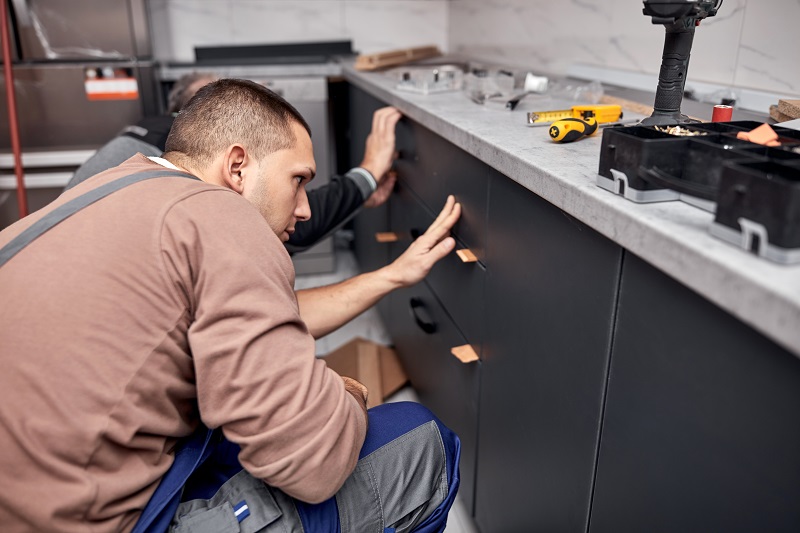7 Basic Plumbing Repairs Every Homeowner Should Know
Plumbing problems are never fun, but they’re an unavoidable reality of homeownership. While some plumbing issues will require the help of a professional, there are a few basic repairs that every homeowner should know how to do. Keep reading to learn more!
Fixing a leaky faucet
A common plumbing issue is fixing a leaky faucet. Whether that is dripping water from your faucet after it is turned off or a leak in the pipes under the sink, getting the leaky faucet fixed as soon as possible should be your priority. A plumber can typically fix this within a few minutes, however, if you think you are up to fixing it yourself, you may be able to with a couple of tools. If the leak is located at the faucet, then the problem may be as simple as tightening the hardware.
Identify the source of the leak. Is it coming from the base of the spout or from around the handle? Once you’ve located the source of the leak, tighten the packing nut for that part of the faucet until it stops leaking. If that doesn’t solve the problem, you may need to replace the washer.
If you need to replace a washer or if the leak is located in the pipes under your sink, make sure that you turn off the water before taking anything apart. Once the water is turned off, you can loosen the hardware around the leak and replace any broken or worn-down washers or pipes. You can typically get replacement parts for plumbing at most hardware stores. If you aren’t sure what the name of the piece you need is, take a picture of the part or bring the damaged part with you when you go to the store. That way you can ensure that the part you bring home matches what you need. Additionally, many hardware stores have associates that can help you find the part. Bringing the part or a picture of the part can make it easier to identify and find.
Unclogging a sink
First, try using a plunger. If that doesn’t work, you can try using a plumber’s snake. Insert the snake into the drain and turn it clockwise until you feel resistance. Then, continue pushing it down until you feel it hitting something. Once you’ve located the clog, turn the Snake counterclockwise to loosen it and pull it out.
This is the same process for unclogging a shower drain as well. Typically, a significant amount of hair and sludge can pair together to create a clog in the shower drain which makes water drain slowly. If you are having this problem in the shower, use a sludge breakdown chemical or a plumbers snake to fix the problem.
Fixing a running toilet
There are a few different things that could be causing your toilet to run constantly. The most common culprit is a faulty flapper valve. To fix this, simply remove the old flapper and install a new one. If you aren’t comfortable with doing this yourself, you can hire a professional. Companies like Heaney Plumbing & Heating can help.
Unclogging a showerhead
First, remove the shower head by unscrewing it from the pipe. Next, soak the shower head in vinegar for about 30 minutes to dissolve any mineral deposits that may be clogging it up. After 30 minutes, scrub away any remaining deposits and reattach the shower head to the pipe.
Fixing a slow drain
First, pour 1/2 cup of baking soda down the drain and follow it with 1/2 cup of vinegar. Allow this mixture to sit for about 15 minutes before running hot water down the drain for about 5 minutes. This home remedy will usually do the trick!
Fixing a cracked tile
Cracked tiles can be fixed relatively easily with some tile adhesive and grout. First, apply tile adhesive to the back of the cracked tile and press it firmly into place on the wall or floor. Next, use a grout float to apply grout around the tile in order to fill in any gaps and smooth everything out. Allow everything to dry for at least 24 hours before using the area again.
Fixing a creaky floorboard
Floorboards often start creaking when they become loose or when there is too much weight on them. In order to fix this issue, start by locating all of the floorboards that are creaking. Once you have found them, use screws or nails to reattach them securely to the floor joists. If your floorboards are particularly squeaky, you might need to add some support by installing some plywood underneath them. Just cut pieces to fit snugly between the floor joists before screwing them into place. Be sure not to over tightened the screws or nails, as this might cause more damage. Also, be sure that any furniture is evenly distributed several feet apart so that only small amounts of weight are on any single floorboard at once. By following these steps, you should have no problem getting rid of those pesky creaks! But if your problems persist, don’t hesitate to call in professional help.
These seven basic plumbing repairs should be fairly easy for any homeowner to do themselves—saving time and money in costly repairs! However, if your plumbing problems persist after trying these solutions, don’t hesitate to call in professional help! Thanks for reading!















